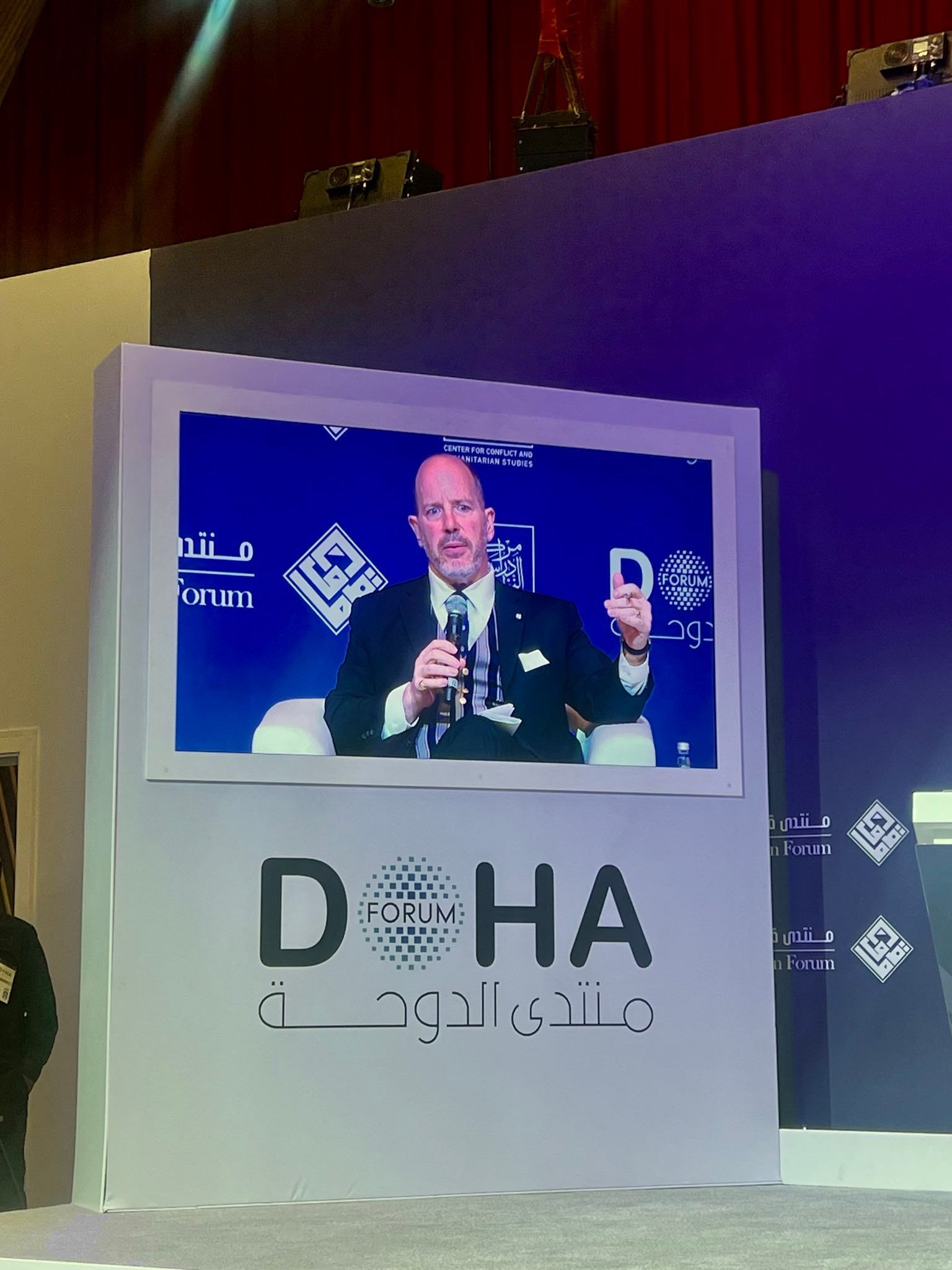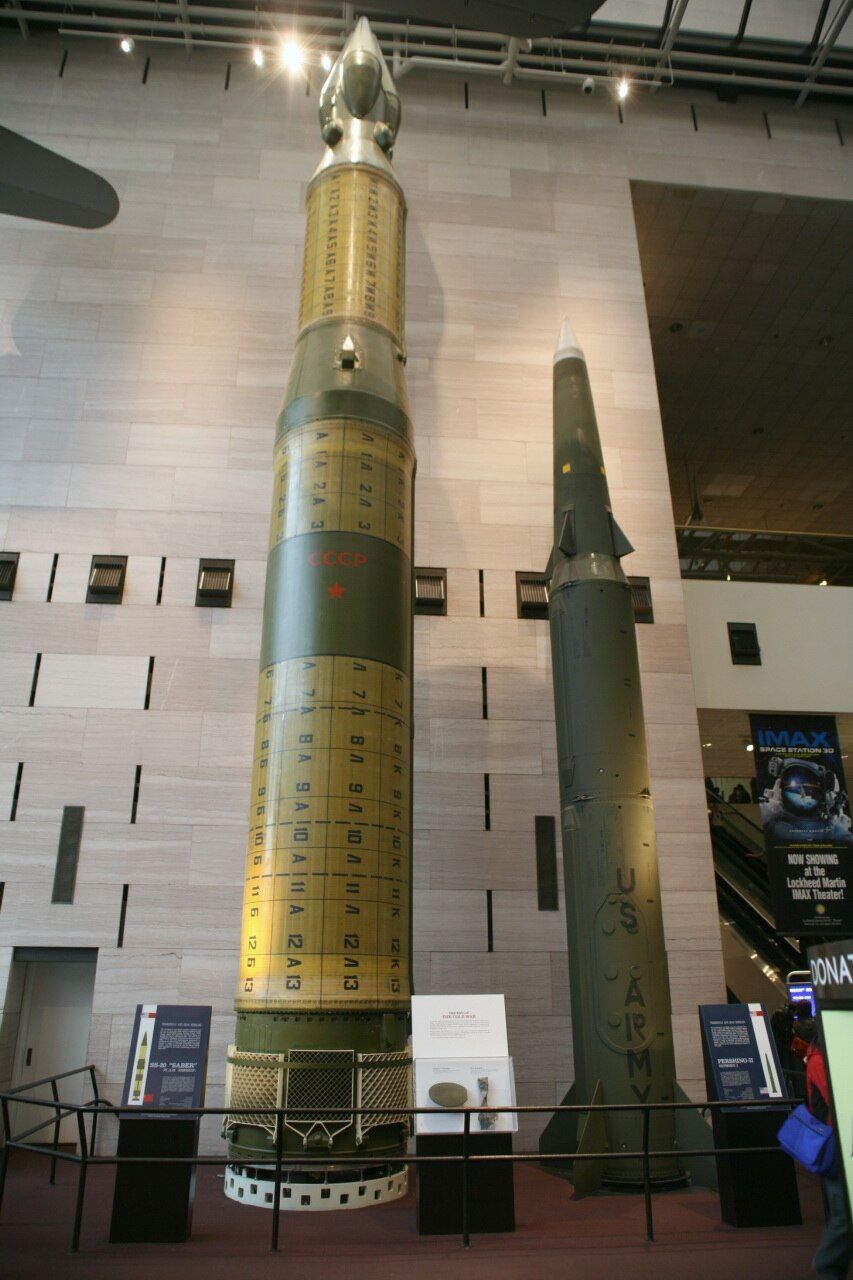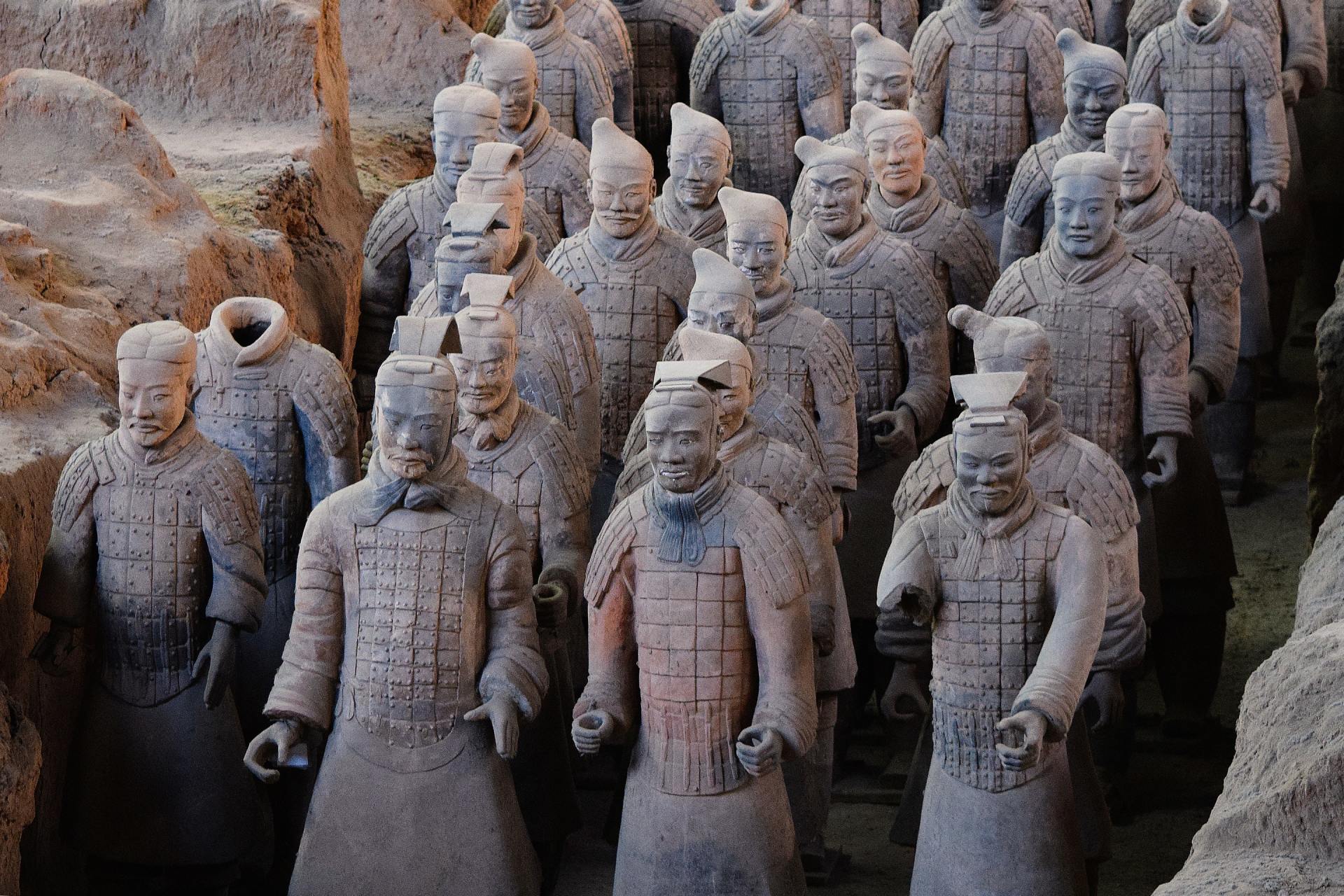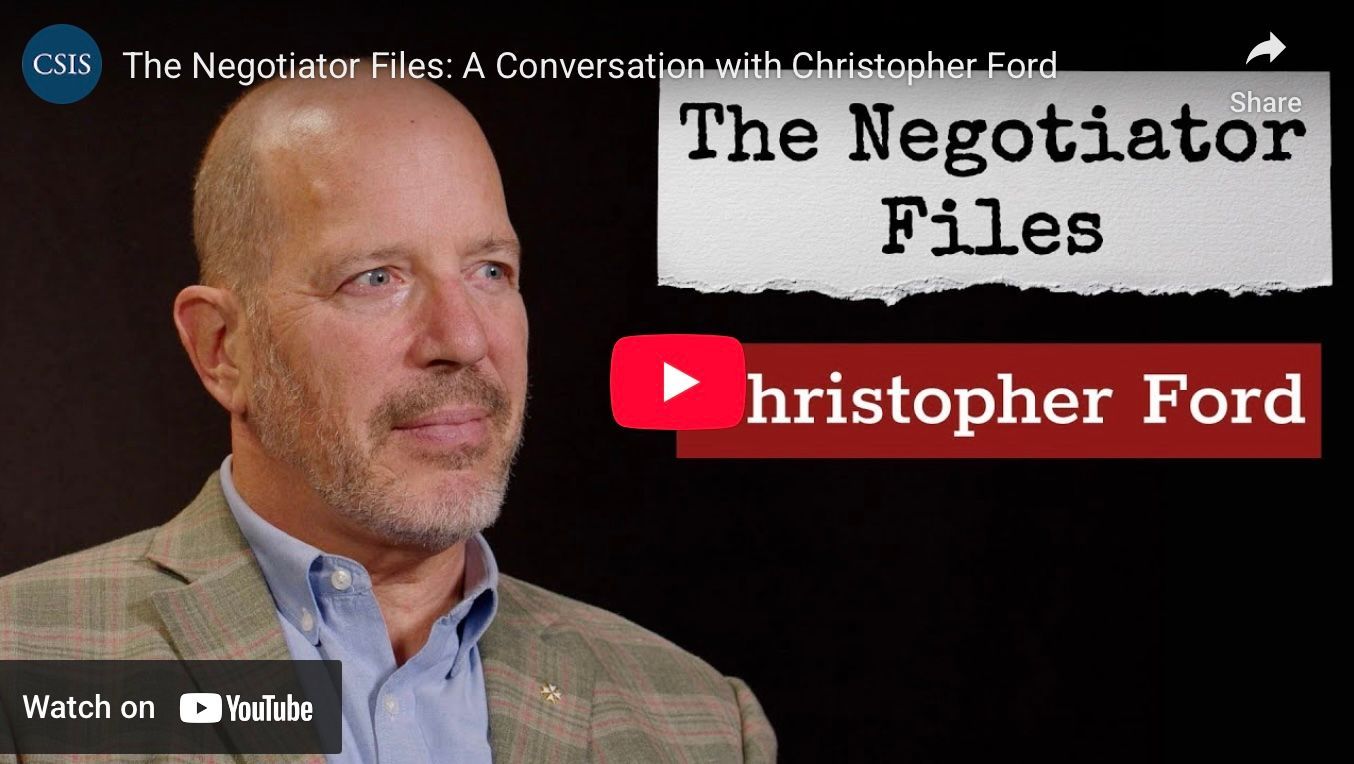The U.S.-Indian Partnership, Nuclear Weapons, and Deterring Aggression
Below are the remarks Dr. Ford prepared for his presentation at the “Track 1.5” U.S.-India Security Dialogue in New Delhi on July 25, 2022.
Thank you for inviting me to this conference. I’m grateful to the U.S. Naval Postgraduate School and the Observer Research Foundation (ORF) for organizing this event, and of course to the U.S. Defense Threat Reduction Agency for its sponsorship. It’s a pleasure to be here, to have the chance to meet and talk to counterparts from ORF and the other distinguished participants, as well as to have my first chance to visit India for the first time as a private citizen – as opposed to a U.S. Government employee – since way back in 1990 when I was in graduate school.
Naturally, my comments today are merely my personal views, and do not necessarily represent those of anyone else at the MITRE Corporation, the Hoover Institution, or the U.S. Government. Nevertheless, I’m very pleased to have the chance to speak to you.
From the perspective of a U.S. nuclear weapons strategist, this is quite an interesting and important time for thinking about such issues in the Indo-Pacific context. In Washington, a new Nuclear Posture Review (NPR) has been drafted, but it’s still being kept largely under a shroud, veiled by classification in ways that neither the Obama Administration nor the Trump Administration chose to do about their approaches to nuclear weapons policy.
It’s striking that the Biden Administration has so far chosen not to publicly articulate the details of its nuclear weapons posture. It’s also interesting to see the debate currently underway in Washington, both in Congress and even within and between elements of the Executive Branch – and in public, on the record, no less – over the Biden Administration’s attempt to cancel the planned submarine-launched nuclear-armed cruise missile (SLCM-N).
To my eye, though many observers had been worried about where things would go, these are hints of what I hope will be seen as strategic seriousness in meeting present-day deterrence challenges. One can still disagree with the details – and in some regards, I would argue, one should. (In particular, I myself deplore the Biden Administration’s effort to cancel the SLCM-N, which sends a worrying signal of U.S. inconstancy even as security threats in the Indo-Pacific continue to deteriorate, not least as the result of a huge Chinese nuclear build-up that only came into public view after the SCLM-N program was established.) Nevertheless, this is clearly no longer the Washington strategic policy community of disarmament-focused editorial-writing by the so-called “Four Horsemen” of 2007, nor that of President Obama’s “Prague Speech” of April 2009.
After some excursions into soaring – if not always realistic – ambitions to rid the world of nuclear weaponry, the U.S. policy community seems to have been circling back to the commonsensical conclusion that (a) a robust and resilient nuclear deterrent is essential to forestalling aggression and buttressing the free and open international order upon which peace and prosperity have depended for so long, (b) nuclear weapons are critical to deterring conventional aggression by dangerous great power revisionists such as China and Russia, and (c) for better or worse, there is no prospect of these things not being the case for the foreseeable future.
This is an important change. Remember, after all, that when he was Vice President, Joe Biden pledged his support for the “sole purpose” theory of nuclear weaponry – a curious doctrine that rather remarkably departs from decades of doctrine and practice, not just in the United States but also in essentially every nuclear weapons possessor state, ever, in pretending that such weapons have no utility in deterring non-nuclear attack. Remember that then-Vice President Biden also enthusiastically supported President Obama’s Nobel Prize-eliciting promise in Prague to lead the world in getting rid of nuclear weaponry, and that the Obama administration helped give momentum to the Treaty on the Prohibition of Nuclear Weapons (TPNW) by sending a U.S. delegation to one of the so-called “humanitarian impact” conferences organized to promote the idea. And recall, too, that the Biden Administration, now in charge of U.S. nuclear weapons policy, has enjoyed two years of friendly partisan majorities in both chambers of the U.S. Congress.
This is why it is so interesting now to see no adoption of “sole purpose” theory, no move to drop the new, lower-yield submarine-launched ballistic missile warhead devised and put into service by the Trump Administration, nor – despite strong calls for such changes by many among the President’s political base – any moves to pare back the long-established nuclear modernization programs that are today in the process of recapitalizing the United States’ aging intercontinental ballistic missiles, ballistic missile submarines, and strategic bomber fleet. And this is also why it’s so interesting to see such public disagreement within the Executive Branch over the effort to cancel SLCM-N. Even the ranks of the Biden Administration itself, it would seem, are not all fully on board with pretending that the security situation in the Indo-Pacific is so benign that we can safely abandon efforts to recapitalize the kind of forward-deployable undersea-based nuclear capability that President Obama scrapped when he got rid of the nuclear-tipped submarine-launched Tomahawk cruise missile (TLAM-N) in 2010.
I hope that the current NPR is not being still kept under a shroud because of how novel and path-breakingly disarmament-friendly it isn’t – and I hope that the Biden Administration will finally declassify and publish the document. It would appear that the Washington policy community – even on the political Left – has returned to a more common-sense appreciation for U.S. nuclear weapons and deterrence. This is actually a very good thing in light of the threats facing our country and our allies and partners in the world today, and we should not hide the basic, deterrence-promoting contours of the Biden Administration’s “post-Prague” nuclear weapons policy from our adversaries behind a wall of security classification.
If a return to an enduring focus on nuclear deterrence is indeed the grudgingly bipartisan nuclear “new normal” in Washington, of course, that’s bad news if you happen to be a Russian aggressor in Eastern Europe, or if you are a Chinese military planner preparing to do in Taiwan what Putin’s band of war criminals are trying to do to the similarly sovereign people of Ukraine. But I think it’s good news for U.S. national security, and for the many allies and strategic partners alongside whom we stand in confronting the threats and dangers presented by such revisionist aggression.
But how does South Asia fit into all of this?
Most Americans, to the extent that they think of nuclear weapons issues in connection with this region at all, think of the dangers and instabilities created by the ongoing nuclear arms race between India and Pakistan. And indeed, that local arms race is a very worrying one, involving a rapid expansion of capabilities on both sides.
This includes Pakistan’s destabilizing moves toward ever-longer-ranged strategic-class missiles of a sort that it doesn’t actually need for any conflict scenario with India, as well as its development of very short-range “battlefield” weapons that are likely to exacerbate crisis-stability problems and to create risks of loss of control or theft by terrorists or other radicals. Moreover, Pakistan and India apparently both also feel disturbingly willing to engage in various forms of performative but potentially escalatory violence against each other – cross-border terrorist attacks and air strikes, respectively – underneath the nuclear “umbrella” of their deterrent standoff in ways that could easily fly horribly out of control. I also worry about potential postures in India that might worsen crisis-stability problems, such as in “surging” nuclear-armed submarines to sea in a crisis.
So make no mistake about it: despite the relative lack of attention it gets elsewhere in the world, the South Asian arms race is perhaps the most worrisome and dangerous nuclear arms competition underway in the world today. It’s thus imperative for both India and Pakistan to do much more to try to slow their reciprocal build-ups, to manage these risks better, and to begin to build habits of strategic engagement and reciprocal risk-management loosely analogous to what the United States and the Soviets were eventually able to build after some troubling close calls during the Cold War.
But there’s another complication here, too. China is engaged in a huge build-up of strategic missiles easily able to fly from the genocidal charnel house of Xinjiang to targets anywhere in India, and Beijing seems to have acquired a penchant for bullying and territorial self-aggrandizement in the mountains of India’s northern border – where Indian soldiers have been attacked and killed by Chinese counterparts as recently as 2020.
I certainly don’t envy India’s situation of facing nuclear deterrence conundra with two different adversaries in two different directions at the same time. But then, that’s a kind of problem that we Americans also face, with Russia and China. Such “dual deterrence” issues are challenging indeed – not least because what deters can vary from one “target” of deterrence to the next, but you only get one nuclear posture at a time. Nevertheless, these challenges may also help our two nations focus better upon common interests.
These are unsettled and unsettling times from the perspective of nuclear weapons doctrine and posture. Russia has been expanding its nuclear arsenal, not only with new “exotic” strategic delivery systems, but also with more short-range systems of a sort it retained by not living up to its disarmament promises in the 1990s (in the Presidential Nuclear Initiatives [PNIs]), as well as intermediate-range systems it first re-acquired illegally, by violating an arms control treaty. In the clear belief that threats from such systems will give it “space” in which to carry out aggressive war, Russia has been rattling the nuclear sabre and issuing bellicose nuclear weapons threats in the hope that this will protect it from accountability as it invades and dismembers Ukraine, commits war crimes with impunity, and rewrites European boundaries by force through wars of aggression for the first time since Hitler.
For its part, China, too, seems to be drawing similar lessons. It is engaged, for example, in a massive expansion of its nuclear arsenal on a timeline that coincides with many observers’ expectations for an invasion of Taiwan. Beijing clearly also hopes that nuclear weapons threats will give it “space” in which to invade and seize territory from democratic neighbors with impunity – not merely with Taiwan but perhaps in the Himalayas and eventually the Russian Far East as well.
This is why, though I am frequently asked to participate in events on arms control and nuclear disarmament issues, I believe that the most immediate nuclear weapons question before the world today is actually not related specifically to those topics. Nor is it even related to nuclear deterrence, at least not in the defensively focused sense that leaders approach deterrence in the United States, NATO, and among America’s alliance partners in the Indo-Pacific. To my eye, the most pressing nuclear weapons question facing the world today relates to the offensive use of nuclear weapons to “deter” responses to aggression and thereby facilitate revisionist powers invading and dismembering their neighbors.
I do not see there being any kind of “magic recipe” that will quickly and easily solve these problems, either for India or for the United States. As operationally and practically challenging as meeting these threats will be, however, the answer is at least not conceptually difficult: it revolves around the maintenance of strong military capabilities and consistent firmness, resolution, and close cooperation by allies and partners in the face of such threats.
Given Beijing’s “enabler” relationship with Pakistan and its “no limits” strategic partnership with Russia, moreover – even as the Kremlin’s ongoing atrocities and imperialist aggression in Ukraine make India’s further reliance upon Russia for advanced weaponry quite unconscionable – I would argue that recent events underline just how important it is for our two countries to work together better against the common threat we face from China.
As it has often been said, the world’s oldest democracy and the world’s largest one – a country, no less, that will soon be more populous even than China itself, perhaps as early as next year – are natural partners in upholding the free and open, rules-based international order against revisionist threats from authoritarian dictatorships. I’m pleased that conferences such as this one can contribute to building the intellectual and experiential “connective tissue” of relationships that will be needed to help build, expand, and maintain this partnership for years to come.
Thank you.
– Christopher Ford









